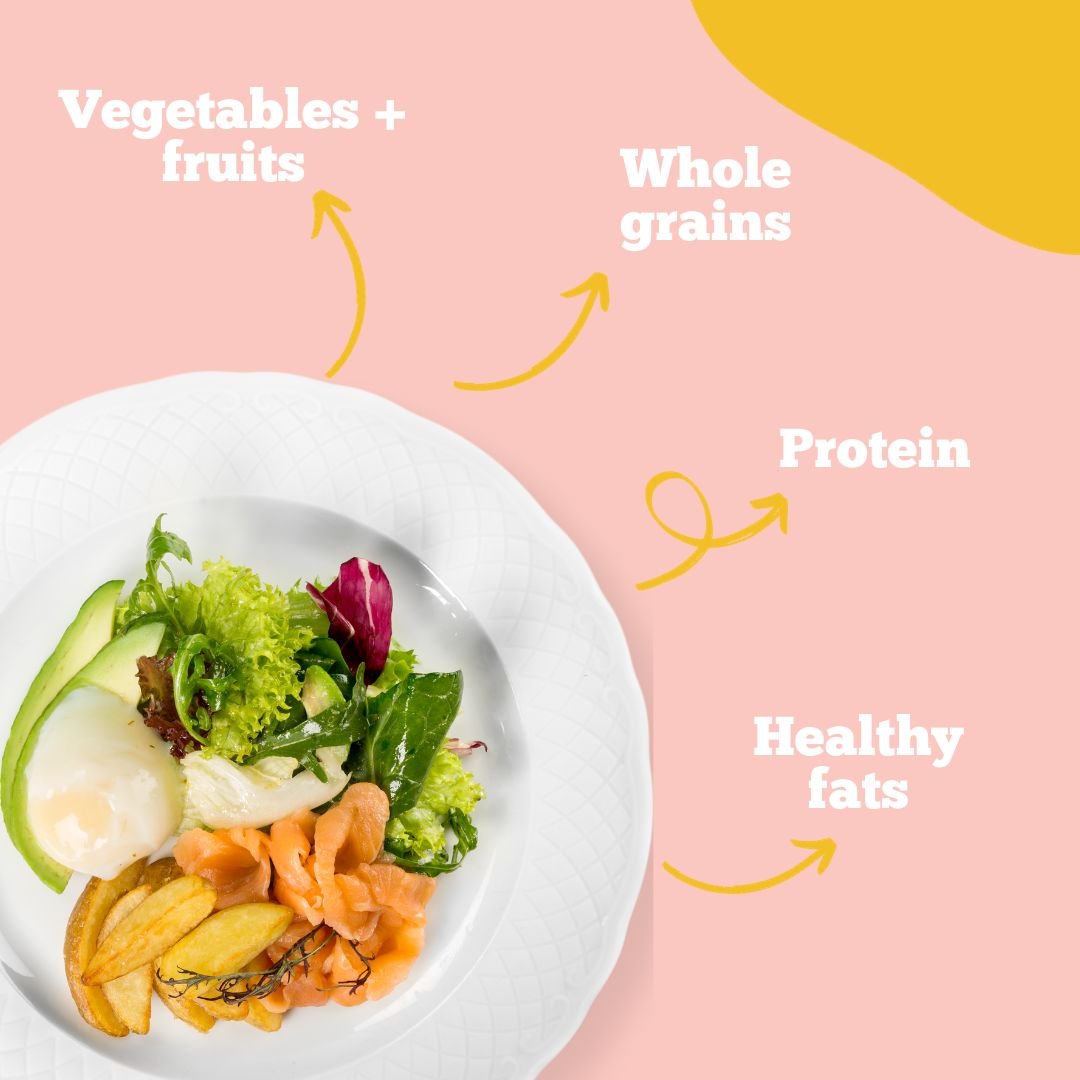The top questions I get asked as a health and nutrition coach are:
“What do I eat to get healthy?”
or
“What do I eat to lose weight?”
or
“What is nutritional yeast?”
I am sort of kidding about the last one. Although sometimes people look at me sideways when I talk about nutritional yeast! Don’t worry if you also don’t know what it is — I will link an article all about it at the end of this article.
People truly seem to need ideas on what foods to eat to get healthy. Simple as that.
It is one of the things I am best at, and am very passionate about.
First of all, I am a foodie at heart.
Second, I am healthy. I walk the talk.
I strive for optimal health daily because I plan to live to a healthy 100.
To get to that healthy 100, I am following these guidelines:
- Good sleep
- Good mental health/ managing stress
- Movement every day
- Eating minimally processed foods
- Eating what I want in moderation
- Nurturing connections and relationships
For the purpose of this article, I am going to keep the focus on what food to eat but wanted to show you that it is more than just the food you eat to maintain your health.
But food plays a massive role in your health.
So, let’s get on with it!
Photo by Mgg Vitchakorn on Unsplash
Here’s how to build a healthy plate
Prioritize veggies and fruit for half of your plate. A note here… potatoes are delicious, but they’re not included in this half because of their effect on blood sugar.
Whole grains for the win! Make about a quarter of your plate whole grains. This can include foods like quinoa, oats, brown rice, whole wheat pasta, and barley. They provide essential nutrients but also are gentler on your blood sugar compared to refined grains.
Get some amazing power with protein. Another quarter of your plate should be dedicated to proteins. Think about adding things like fish, chicken, beans, etc. A note here… it’s best to consume red meat in moderation and steer clear of processed meats like bacon. If you do indulge in bacon, make it an occasional treat.
Go for healthier oils instead of partially hydrogenated oils as they contain trans fat. Use cooking oils like olive, canola, and sunflower in moderation.
Stick mainly to water, tea, or coffee for drinks (be wary of caffeine after 3 PM). Avoid beverages high in sugar (like soda), limit dairy to one or two servings daily, and if you’re having juice, I suggest making it a small glass.
It is simpler than you thought, right?
Experiment with building your healthy plate using a variety of different nutritious foods. I suggest finding the healthy food that you truly enjoy — don’t force yourself to eat things you don’t like or it may derail your journey to eating better.
One last tip: remember that your plate does not need to be a huge dinner plate. You can still get a healthy amount of food with a smaller plate. I generally use a small plate for my dinner. I eat until I am 80% full. The smaller plate helps me to stay at 80% and not overeat.
Need some healthy food ideas? Here’s 100:



Comments ()